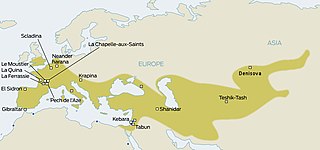
The Mousterian is a techno-complex of stone tools, associated primarily with the Neanderthals in Europe, and to the earliest anatomically modern humans in North Africa and West Asia. The Mousterian largely defines the latter part of the Middle Paleolithic, the middle of the West Eurasian Old Stone Age. It lasted roughly from 160,000 to 40,000 BP. If its predecessor, known as Levallois or Levallois-Mousterian, is included, the range is extended to as early as c. 300,000–200,000 BP. The main following period is the Aurignacian of Homo sapiens.

Gorham's Cave is a sea-level cave in the British overseas territory of Gibraltar. Though not a sea cave, it is often mistaken for one. Considered to be one of the last known habitations of the Neanderthals in Europe, the cave gives its name to the Gorham's Cave complex, which is a combination of four distinct caves of such importance that they are combined into a UNESCO World Heritage Site, the only one in Gibraltar. The three other caves are Vanguard Cave, Hyaena Cave, and Bennett's Cave.
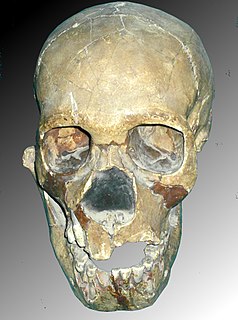
Teshik-Tash 1 is a Neanderthal skeleton discovered in 1938 in Teshik-Tash Cave, in the Bajsuntau mountain range, Uzbek SSR, central Asia.

Prof. Clive Finlayson MBE FLS is a Gibraltarian zoologist, paleoanthropologist and paleontologist. He is the incumbent Director of the Gibraltar Museum. Finlayson has published various works mainly based on his research which includes ongoing excavations at Gorham's Cave in Gibraltar, the last known site of the Neanderthals.

The Gibraltar National Museum is a national museum of the history, culture and natural history of Gibraltar located within the city centre of the British overseas territory of Gibraltar. Founded in 1930 by the then Governor of Gibraltar, General Sir Alexander Godley, the museum houses an array of displays portraying The Rock's millennia-old history and the unique culture of its people. The museum also incorporates the remains of a 14th-century Moorish bathhouse. Its director since 1991 is Prof. Clive Finlayson.
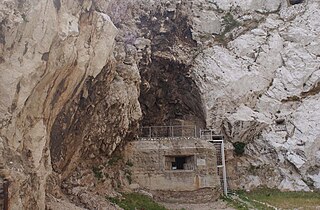
Forbes' Quarry is located on the northern face of the Rock of Gibraltar within the Upper Rock Nature Reserve in the British Overseas Territory of Gibraltar. The area was quarried during the 19th century to supply stone for reinforcing the fortress' military installations. In the course of the quarrying, a limestone cave was found. The second ever Neanderthal discovery was made within this cave when Cpt. Edmund Flint found the skull of an adult female Neanderthal in 1848.

Vanguard Cave is a natural sea cave in the British Overseas Territory of Gibraltar which is part of the Gorham's Cave complex. This complex of four caves has been nominated as a UNESCO World Heritage Site status in 2016. The cave complex is one of the last known habitations of the Neanderthals, with a period of inhabitation from 55,000 to 28,000 years ago. It is located on the southeast face of the Rock of Gibraltar.
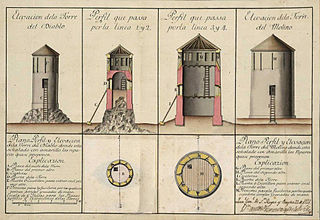
The Devil's Tower was an ancient watchtower in the British Overseas Territory of Gibraltar close to a rock shelter where fossil remains of a Neanderthal child were discovered, together with palaeolithic tools. The Tower and remains, however, were unrelated.

Geraldine Finlayson is a Gibraltarian Deputy Head of Heritage, as well as Director of the Institute for Gibraltarian Studies and Chief Laboratory Scientist of the Gibraltar Museum. She was Director of the John Mackintosh Hall until October 2011. She has played a major role in developing the "Gibraltar method" of archaeological research, especially that carried out underwater, and is one of a team of scientists who have made major discoveries about the nature of Neanderthal culture.

Gibraltar 2, also known as Devil's Tower Child, represented five skull fragments of a male Neanderthal child discovered in the British Overseas Territory of Gibraltar. The discovery of the fossils at the Devil's Tower Mousterian rock shelter was made by archaeologist Dorothy Garrod in 1926. It represented the second excavation of a Neanderthal skull in Gibraltar, after Gibraltar 1, the second Neanderthal skull ever found. In the early twenty-first century, Gibraltar 2 underwent reconstruction.
Bray's Cave is a limestone cave in the British Overseas Territory of Gibraltar. Human remains and notable Neolithic and Bronze Age finds have been unearthed in the cave. Three almost complete skulls were recovered but the important find was that people had returned to the site to re-use it for funerals, other cranial fragments from other individuals were recovered, and it appeared that previous remains had been move aside for a more recent death.
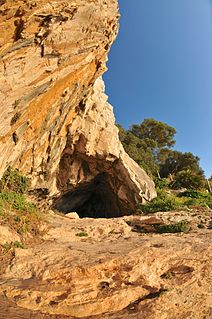
The Goat's Hair Twin Caves are in the British Overseas Territory of Gibraltar.
Judge's Cave is a cave in the British Overseas Territory of Gibraltar. Human remains dated to the late prehistoric period have been unearthed in the cave.

Pete's Paradise Cave is a cave in the British Overseas Territory of Gibraltar. Explored in the 1960s and 1970s by a team led by George Palao, four skeletons have been unearthed in the cave, two of which were female skeletons with crushed skulls.
Devil's Tower Cave is a cave in the British Overseas Territory of Gibraltar. Archaeologist Dorothy Garrod found a Neanderthal skull in the cave which, together with other evidence found in this cave, shows it was used as a rock shelter by the Neanderthals of Gibraltar.
Boathoist Cave, also known as Bulman's Cave, is a huge sea cave on the south eastern flank of the British Overseas Territory of Gibraltar.

The Neanderthals in Gibraltar were among the first to be discovered by modern scientists and have been among the most well studied of their species according to a number of extinction studies which emphasize regional differences, usually claiming the Iberian Peninsula partially acted as a “refuge” for the shrinking Neanderthal populations and the Gibraltar population of Neanderthals as having been one of many dwindling populations of archaic human populations, existing just until around 42,000 years ago. Many other Neanderthal populations went extinct around the same time.

Scladina, or Sclayn Cave, is an archaeological site located in Wallonia in the town of Sclayn, in the Andenne hills in Belgium, where excavations since 1978 have provided the material for an exhaustive collection of over thirteen thousand Mousterian stone artifacts and the fossilized remains of an especially ancient Neanderthal, called the Scladina child were discovered in 1993.
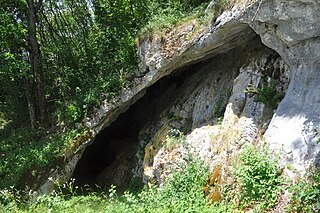
Betal Rock Shelter, a karst cave located on the south-eastern edge of the Lower Pivka river valley on a slope just above the road from Postojna to Bukovje is a site where rich cultural sediment layers with remains of stone tools, artifacts, and numerous fossilized bones of contemporary animals were found. Its entrance was formed by the collapse of the 174 m (571 ft) long cave's ceiling, carved out by the waters of the Pivka River.

Pešturina is a cave in the municipality of Niška Banja in southeast Serbia. It is southwest of Jelašnica and 20 km (12 mi) southeast of Niš. Artifacts from the Middle and Upper Paleolithic periods were discovered since the archaeological excavations began in 2006. The remains, identified as the Mousterian culture, were dated from 102,000 BP+ 5,000 to 39,000 BP + 3,000, which makes Pešturina one of the latest surviving Neanderthal habitats. The cave has been nicknamed the "Serbian Atapuerca".


















